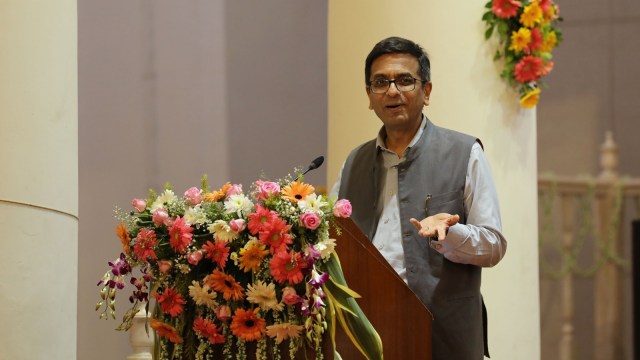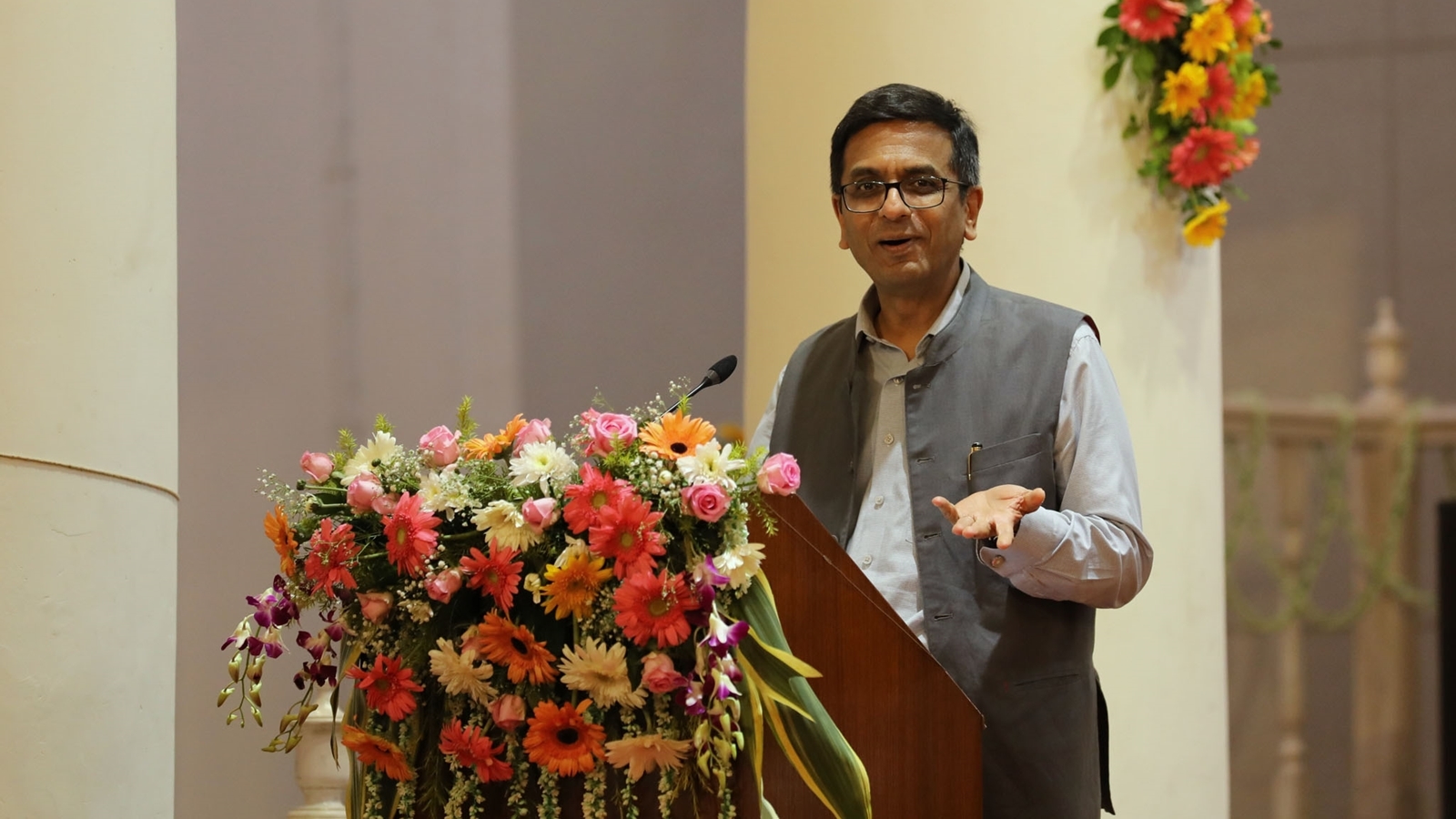

Nov 16, 2024 02:20 IST First published on: Nov 16, 2024 at 04:20 IST
How do you judge a Chief Justice of India or, for that matter, any person in high office? The tests must be contextual to the job but, above all, if the overwhelming predominance of any person’s work is good, praiseworthy and positive, the fact that he has, fractionally, committed errors, does not deserve a harsh verdict. It only shows that he, like us all, has no claim to divinity or infallibility. When eminent persons, within and without the Bar, use the 10 per cent test to chastise or condemn, they not only choose to ignore the 90 per cent glass full but do disservice both to the man and to the institution.
The recently retired CJI, usually referred to by his acronym DYC, firstly did what all judges, including CJIs, are supposed to do, but frequently do not. That is the dual activity of judging and writing judgments. Both as a puisne judge and as CJI, DYC has authored more nine, seven, five and three-judge judgments than any of his predecessors in the past two decades. Seminally vital issues were jurisprudentially addressed with high intellectual quality — not by mere numbers alone. They range from the nine-judge Puttaswamy privacy judgment to Common Cause on the right to die with dignity to Shafin Jahan on the right to marry freely to an expansion of abortion rights in X vs NCT. From striking down the criminality attached to same-sex consensual sex in Navtej to the recognition of queer couples’ right to relationships to overruling his father not once but twice while decriminalising adultery and negating the infamous ADM Jabalpur, DYC has painted with a broad brush. Federalism issues, from the five-judge decision in the NCT case to the very recent nine-judge decision in States versus Centre mining rights, have coexisted with his judgments on religious issues like Sabarimala and Ayodhya as also the Electoral Bonds case.
Merits apart, to wield the pen (actually the computer) with such dexterity has not been seen since the 1960s and ’70s. If judging and writing judgments, and writing them well, is the primary test for a judge (something too easily forgotten), no fair view can say that DYC has not passed it with flying colours. We all know judges who do not write judgments. This one has spanned the diversity of federalism and democratic governance, equality, liberty, gender, disability, free speech and commercial issues, apart from significant dissents (as in the Aadhaar case), with consummate ease in his judicial writings.
That he has been able to do it while being on the lecture circuit, speaking across the country on diverse issues, dealing with myriad administrative and management issues of the Supreme Court is testimony to his unprecedented industry and diligence, reinforced by a lifetime of discipline. It is reflected in his self-confessed musings on being a lark (and not an owl), yoga, alternative medicine, diet restraint of a high order and meditation. It is this humongous industry which has let him leave a mark on so many issues.
Thirdly, no CJI has done so much for infrastructure and technology. Accessibility issues, so much in sync with his passion for facilitation of the differently abled, staff training and exam centres, staff library, a national judicial museum, archives, the beautification of the lawns, the new enclosed spaces with air-conditioning, renovation of courtrooms and bar rooms, media enclosures, crèche facilities, the new cafe by the differently abled, all sit majestically with his most important contribution — the institutionalisation of virtual hearings in most courts and tribunals across India, despite resistance. The use of avant garde technology and AI has yielded a huge number of translated judgments in Hindi and regional languages, a more efficient national judicial grid linking all courts from the lowest to the highest across India. Again, many of these achievements are statistical, even boring, and are continuous journeys not destinations, but he does shine on all these fronts by contrast.
Fourthly, his conduct of proceedings inside courtrooms has been almost blemishless — no mean achievement amidst strong provocations and the vicissitudes of high-profile cases and sometimes irritating trivialities. He has been polite, courteous and considerate, yet firm and decisive. Hardly any advocate, irrespective of seniority, has gone back feeling that he/she has not been heard or that his/her point is not appreciated. The presence of such qualities, in earlier eras taken for granted, are now remembered frequently in the breach amidst the pressures of modern day, over-congested judging.
There is no doubt that he could have avoided both the “PM at home” episode as also the pre-Ayodhya decision comment. It has led to a lot of snide remarks in the last days of an illustrious career. But it would be wrong to ascribe a motivated plan of action to what I think is at best an error of judgement. Contextually, the second comment is understandable, though may not be justifiable, coming as it did amidst small children in his own village’s school, who were chatting informally about all and sundry with the illustrious son of their village. The PM episode leaves him open to all kinds of misinterpretations and was best avoided. That DYC continued to explain or justify these episodes in his later retirement-eve interviews was a third error of judgement.
most read
Equally blameworthy may be the decision not to decide the Shiv Sena/NCP disqualification cases as also the NCT vs LG constitutional cases. He listed them time and again, never refused to hear them but allowed time to run out under his watch. The NCT example was even more inexplicable because two earlier judgments, both by DYC himself, had decided and clarified the issue in great detail, leading to the new NCT parliamentary amendment by the Modi government. There was no one more familiar with the subject than him in the SC to decide the issue expeditiously.
In the end, I have no hesitation in saying that all these shortcomings fall well within the 10 per cent rule, neither besmirching nor eroding nor erasing his spectacular achievements and lasting legacy.
The writer is fourth term MP, jurist, former Chair, Parliamentary Standing Committees on Commerce, Law & Home; Member, Congress Working Committee; former Additional Solicitor General; senior National Spokesperson, Congress; Chair, Cong Department on Law, Human Rights & RTI and author


